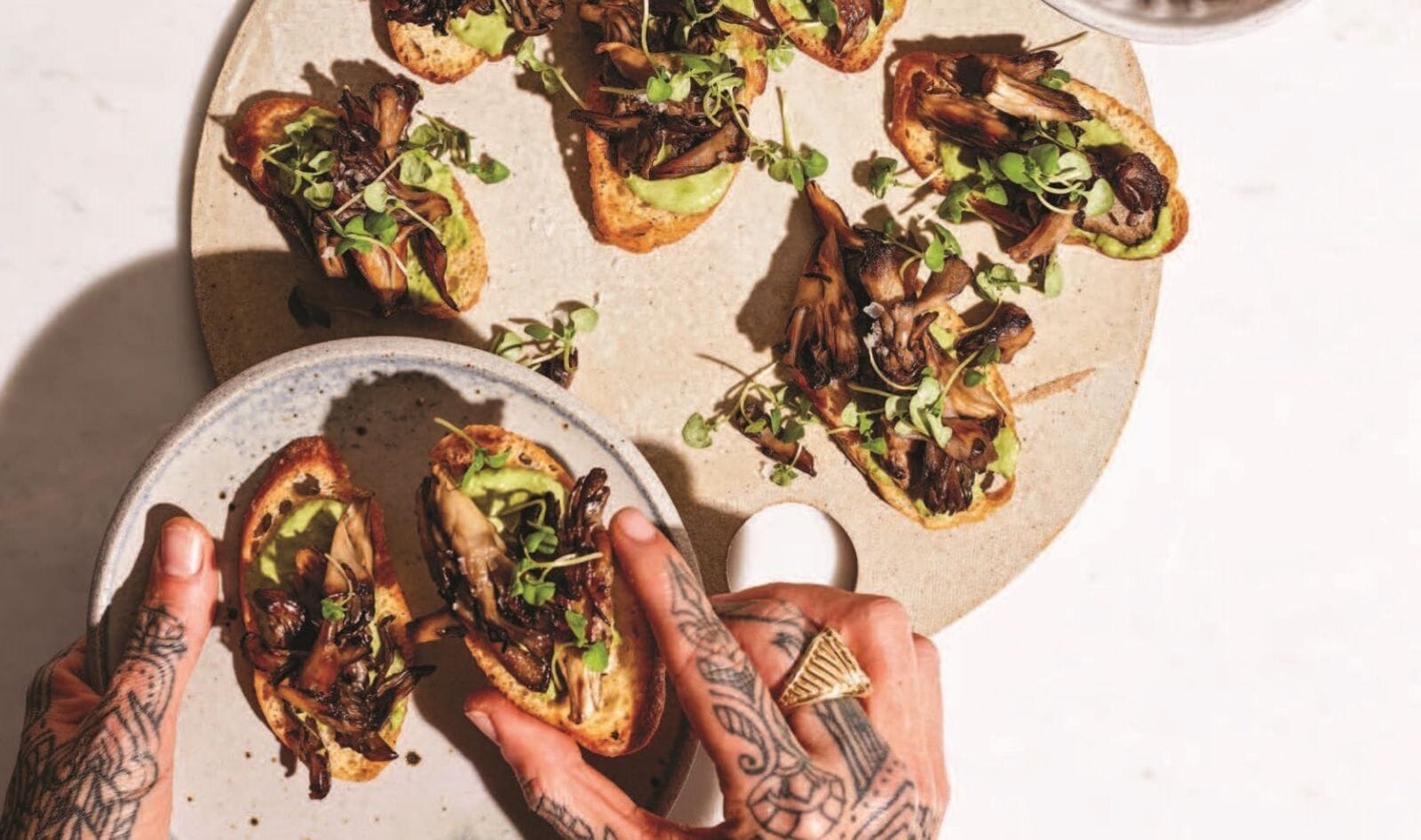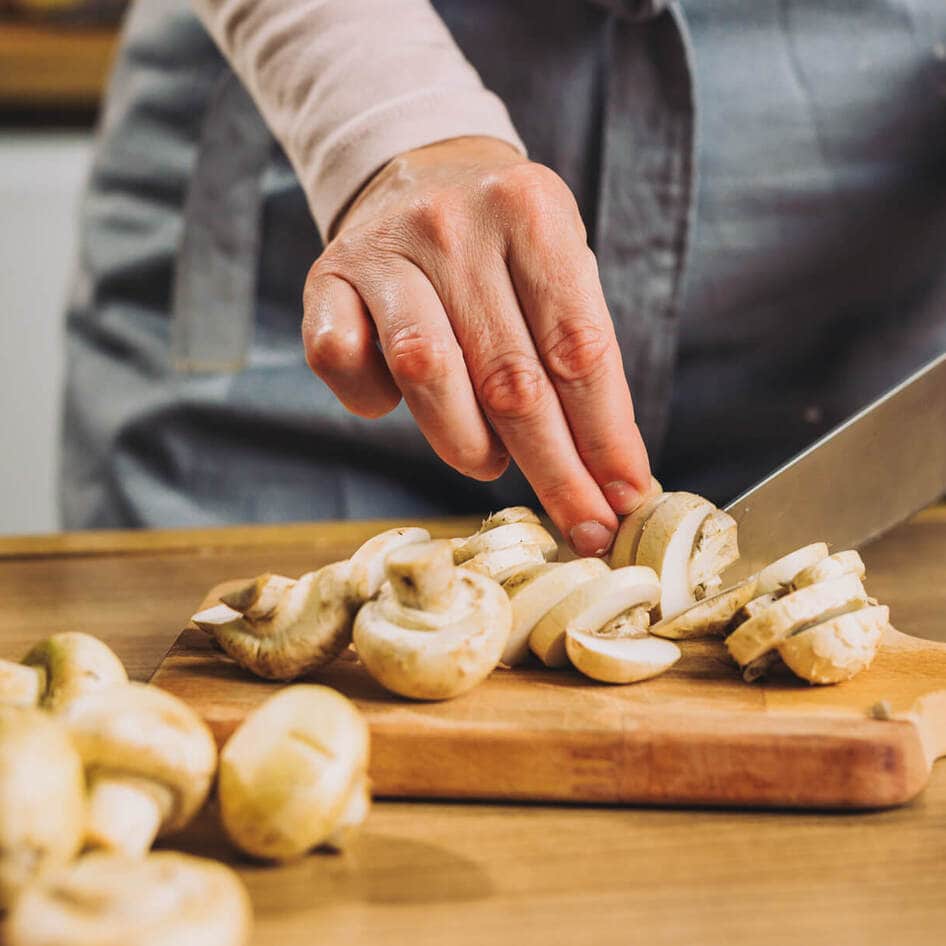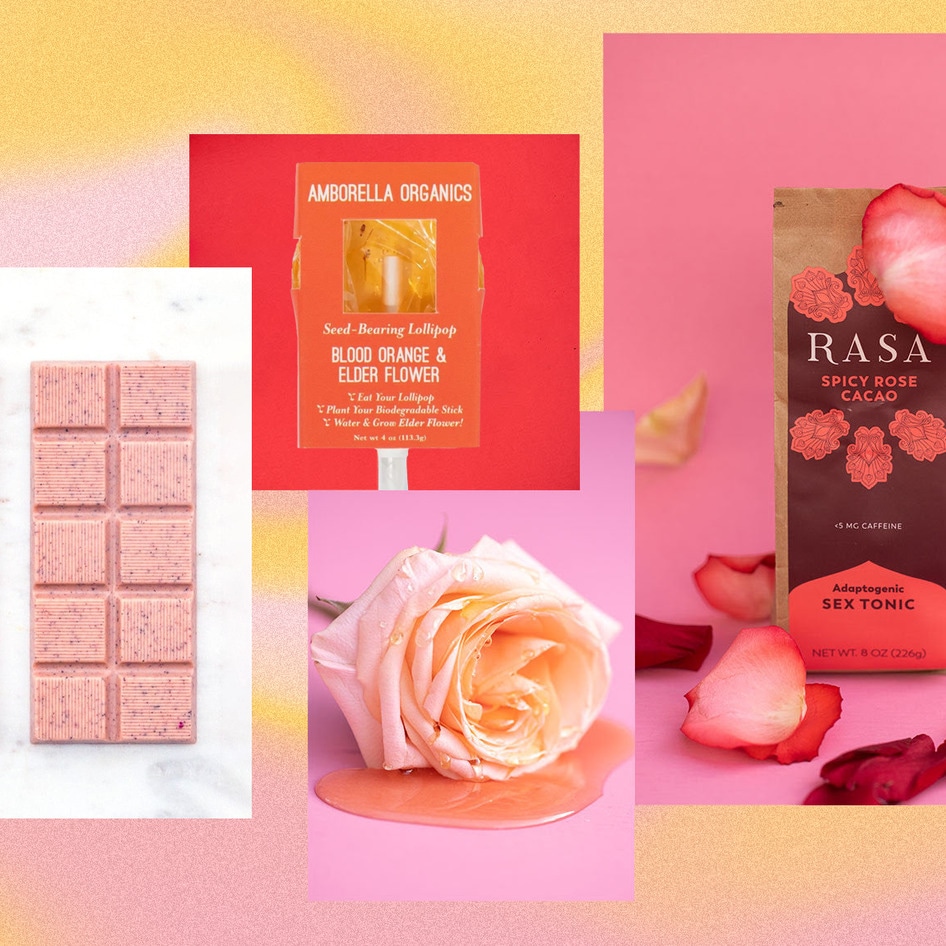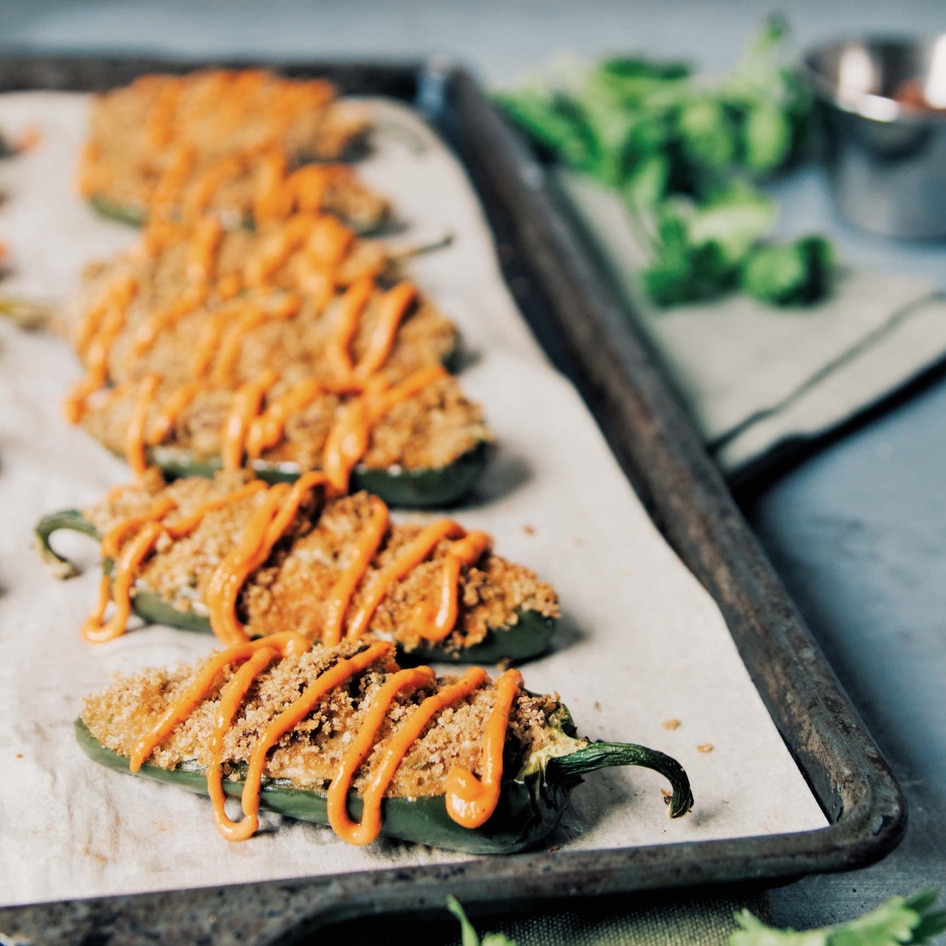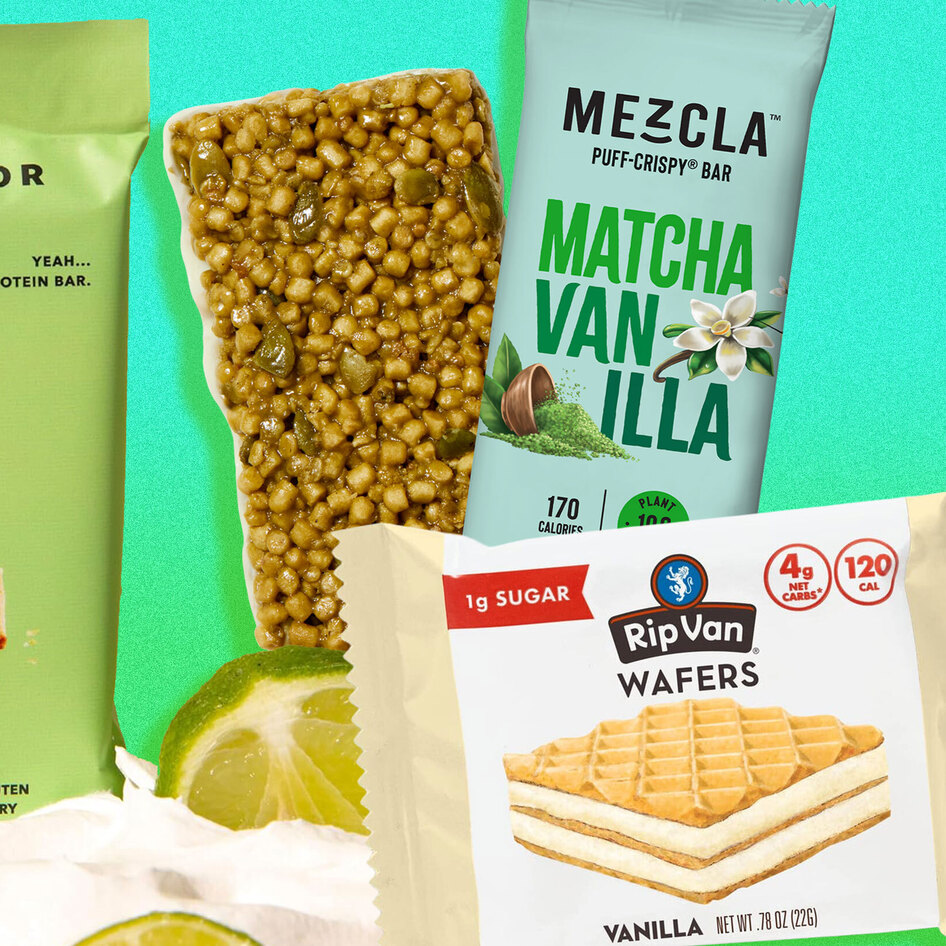The first rule of vegan supper club is don’t leave out the mushrooms. Learning to master the art of mushrooms can be a daunting task. There are more than 2,000 edible varieties, according to the National Institute of Health—each with their own flavor and texture.
Button, cremini, and portobello mushrooms are, according to Farmers’ Almanac, among the most common varieties. Rounding out its list of the top 10 most popular mushrooms is maitake, also known as hen of the woods. These wavy, multi-layered mushrooms are en vogue in many high-end restaurants due to their deep flavor and delicate, feathery texture, making them perfect for hearty and meaty applications.
Suzannah Gerber, executive chef of Haven Vegan Consulting and author of Plant-Based Gourmet, gives us her expert tips for cooking with maitake mushrooms to help you create show-stopping dishes right at home.
Where to find maitake mushrooms
Pick up a package of maitake mushrooms at your local grocery store. Chains such as Whole Foods, Sprouts Farmers Market, and Bristol Farms carry these meaty ‘shrooms. You’ll also find them at Asian grocery stores.
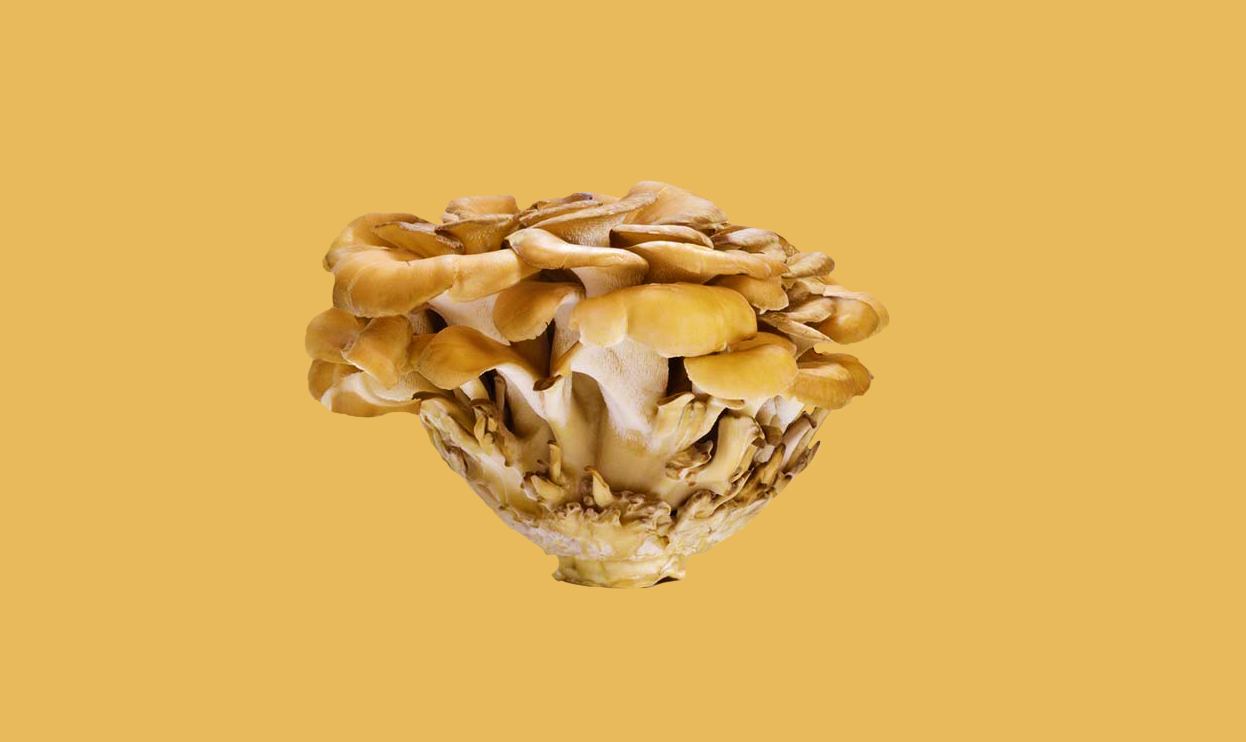
For those who prefer to forage their mushrooms, in the US, wild maitake grow in the Northeastern region, and are most commonly found in older forests at the base of oak trees, notes the Permaculture Research Institute.
Chef Suzannah Gerber’s expert tips for cooking with maitake mushrooms
Study these tips to make the most of your maitake mushrooms and then try your hand at Crispy Herb-Roasted Maitake Vegan Crostini With Walnut Pesto Aioli and Cashew Cream Autumn Risotto With Crispy Maitakes.
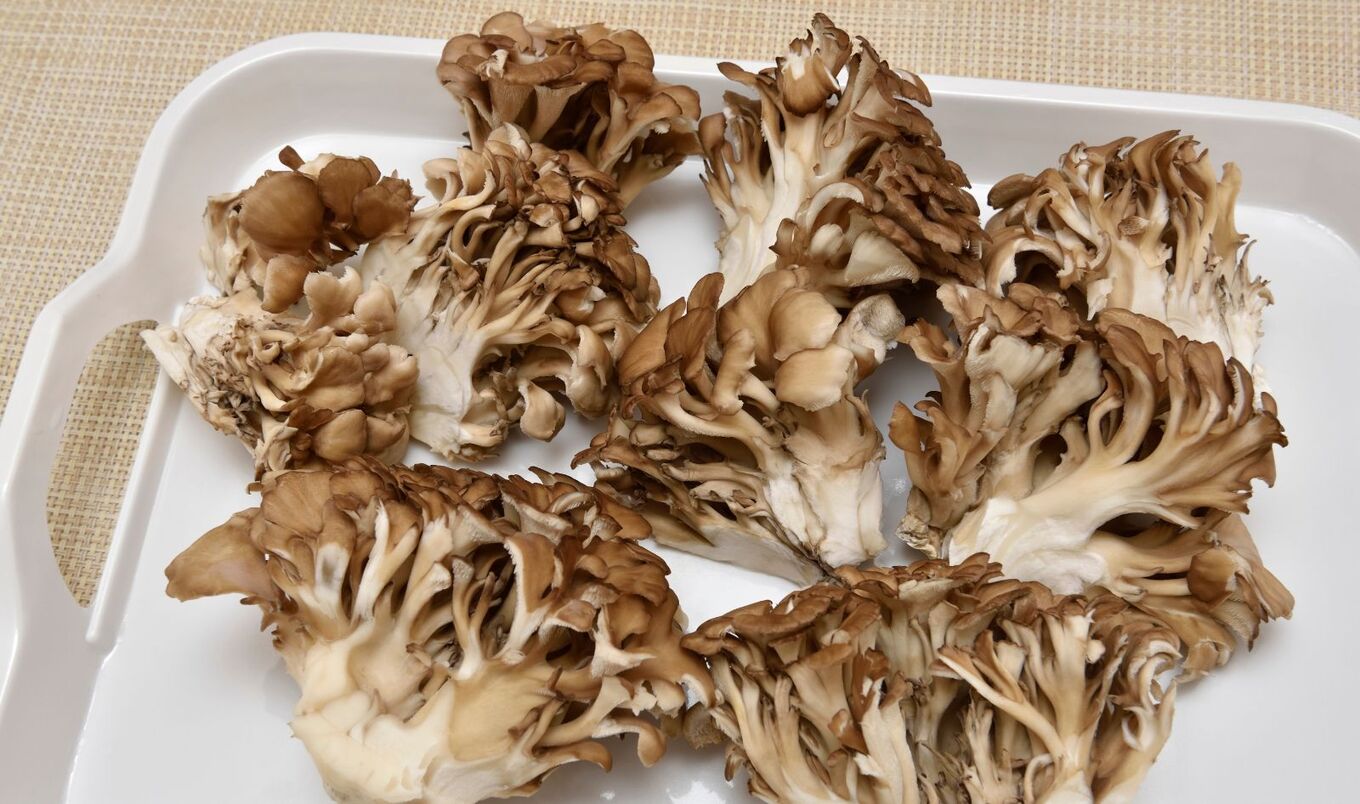 Canva
Canva
1Give maitake the attention they deserve
Don’t use maitake in place of your standard button mushrooms in a stir fry or sauté—you’ll mask the texture and flavor among the high heat and sauce. Maitakes are superstar shrooms and demand the spotlight, so don’t crowd them in a wok with other veggies and flavorings that might steal the show. To protect the coveted texture of this shroom, cook them on their own. However, if you are adding maitake petals to a one-pot dish, try adding them in later with your softer veggies, such as tomatoes, to allow them time to aromatize. Keep an eye on them, and avoid cooking them over a strong heat for more than 10 minutes.
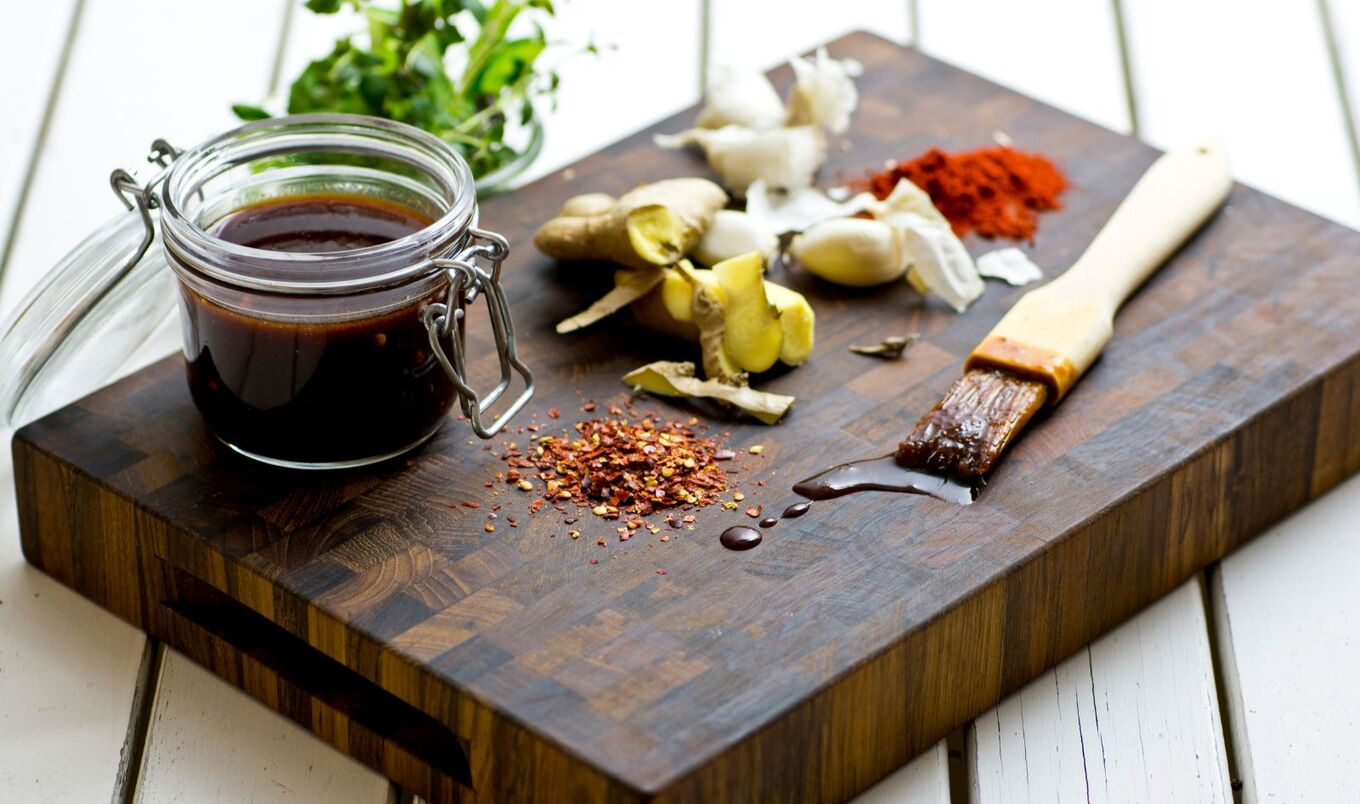 Canva
Canva
2Replace the moisture with something better
Mushrooms are wet—they grow at the base of dewy forests—but the liquid content isn’t exactly something you want to sip by the spoonful. Using a salty and acidic marinade—such as a sauce with a base of rice vinegar and soy sauce—will help draw out the mushroom liquid and replace it with something delicious that flavors the entire mushroom, not just the surface. By adding the right marinade, you can introduce the coveted Maillard reaction—also known as the chemical reaction that happens when amino acids and sugars get hot and heavy, resulting in a wondrous browning that amplifies the flavor and aroma of the mushrooms. This is pro-level cooking at its finest.
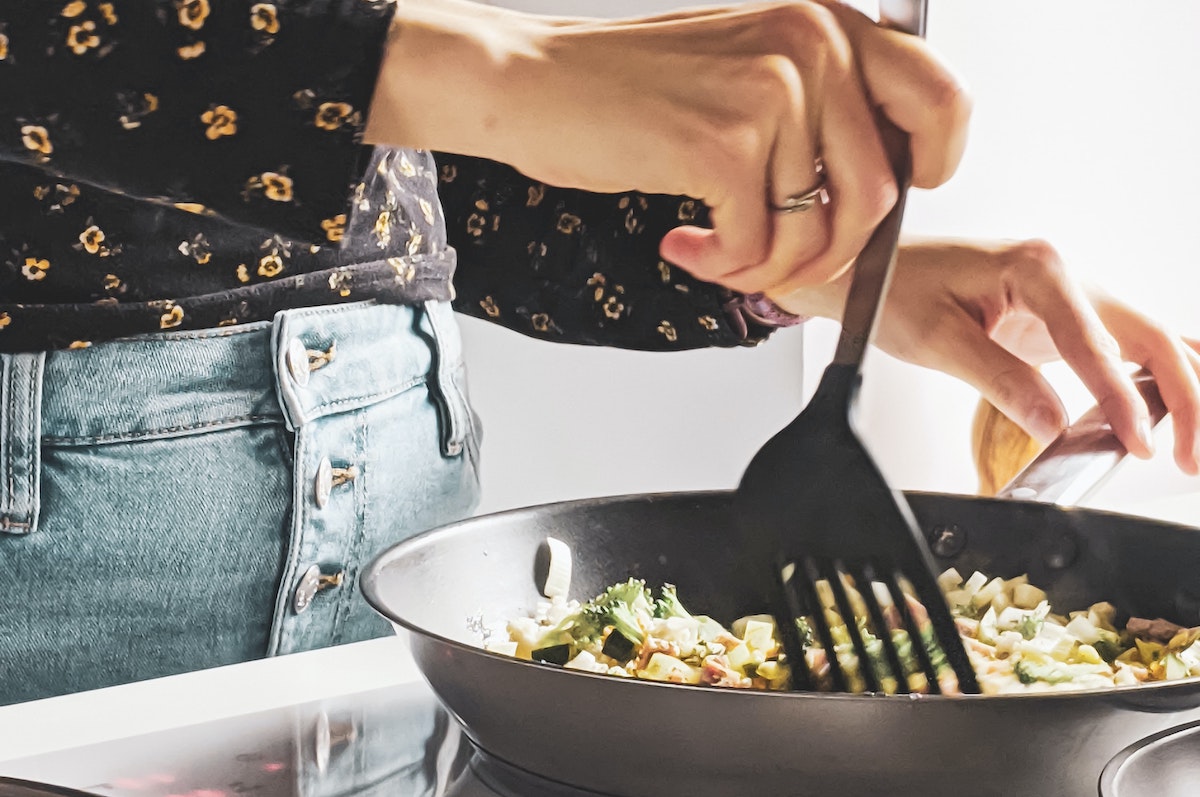 Unsplash
Unsplash
3Press, and press, and press some more
After seasoning and marinating, press the mushrooms while they are in the pan—maintaining pressure as you sear them over heat. Periodically baste them in your marinade to create thick, juicy mushroom steaks. Seared maitake steaks offer a bite you can really sink your teeth into! Here’s a recipe for maitake mushroom steak to get you started.
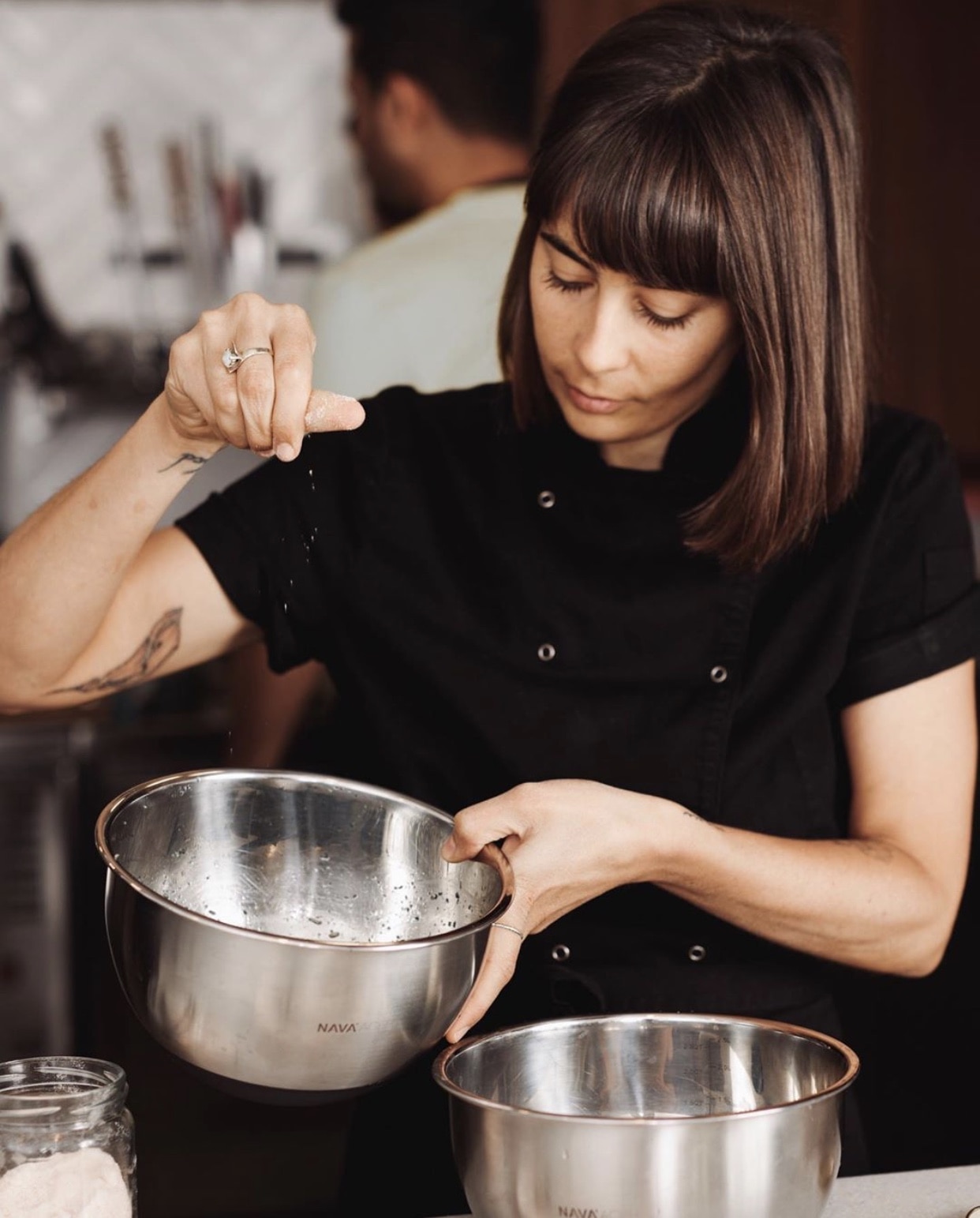 Cooking With Claire
Cooking With Claire
4Change your savory game with mushroom powder
Mushroom powders make amazing flavor boosters for soups and sauces, and maitake powder is one of the best. Pack an umami punch into a gravy, “beef” up your broth, or even mix it directly into the dry mixture for your next savory baked pie or homemade seitan. Even self-proclaimed mushroom-haters can enjoy the rich warmth that maitake powder brings to a dish. Best of all, this seasoning has a long shelf life and isn’t reliant on season or fluctuations in the produce aisle.
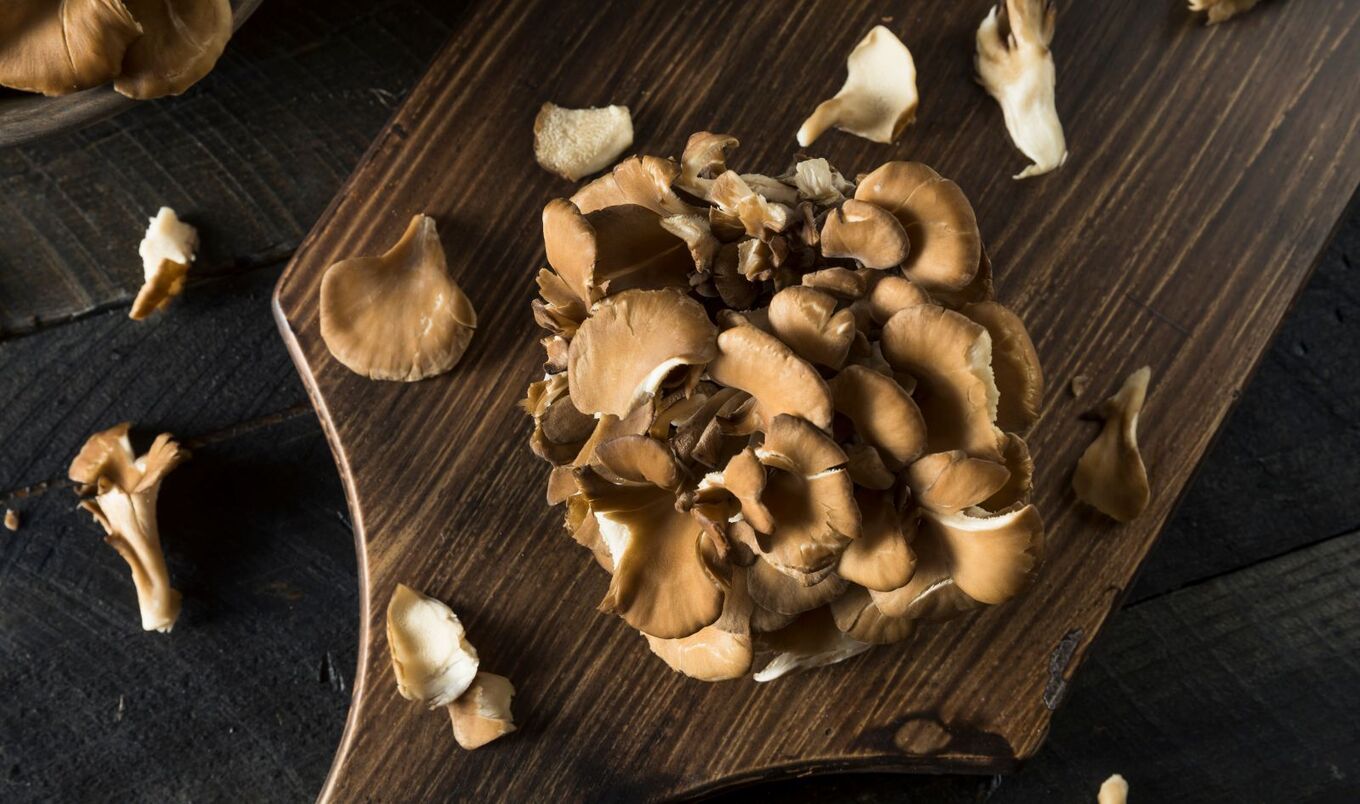 Canva
Canva
5Enjoy it petal by petal
Pluck each of the feathery petals off the maitake cluster and savor each piece. Lightly brush each petal with oil and salt and bake at 375 degrees until crisp—usually 15 to 20 minutes. Toss in some additional seasonings such as smoked salt, smoked paprika, and a dash of toasted sesame oil to create a crispy, bacon-like topping for soups, pasta, or your morning avocado toast.
 Canva
Canva
6Create a customizable mushroom bowl
If you’re into cauliflower crust, you’ll love maitake tart shells. First, press out the mushroom, rolling it flat while you press. Brush the flattened shroom with oil then sprinkle on garlic powder, onion powder, and herbs such as rosemary, sage, and thyme. Using two nesting pyrex or oven-safe bowls, lay your flattened mushroom inside the larger bowl then place the smaller nesting bowl on top. Flip the bowls upside down and place on a baking sheet. Bake at 400 degrees for about 25 minutes then remove the top bowl to allow the mushroom to crisp up. Remove the bowl from the oven and gently peel off the hardened mushroom shell from the overturned bowl. Place the mushroom “bowl” right side up and fill with grilled veggies, a vegan cheese wheel, seasoned rice, or whatever you have left in the fridge. Voila, you’ve just made a Michelin-worthy umami bowl.
Suzannah Gerber (Chef Suzi), executive chef of Haven Vegan Consulting, is a food and medical industry consultant, and the author of Plant-Based Gourmet.
For more on mushrooms, read:
JUMP TO ... Latest News | Recipes | Guides | Health | Subscribe

